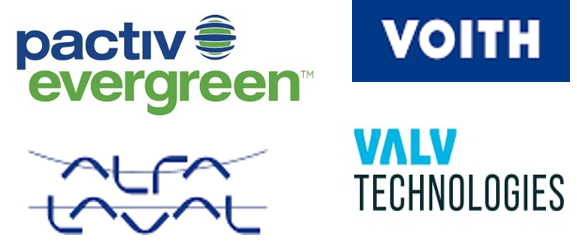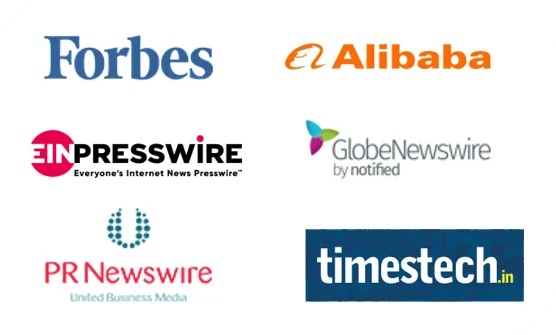Market Overview:
"The global pressure relief damper market was valued at US$ 1.78 billion in 2024 and is expected to register a CAGR of 6.1% over the forecast period and reach US$ 3.0 billion in 2033."
|
Report Attributes |
Details |
|
Base Year |
2024 |
|
Forecast Years |
2025-2033 |
|
Historical Years |
2021-2024 |
|
Pressure Relief Damper Market Growth Rate (2025-2033) |
6.1% |
A pressure relief damper is a crucial component used to regulate and release excessive pressure in ventilation systems. Its primary function is to maintain the optimal pressure levels within the system, preventing damage to equipment and ensuring the safety of individuals in proximity. These components are commonly utilized in commercial buildings, industrial facilities, and Heating, Ventilation, and Air Conditioning (HVAC)s systems.
The global pressure relief damper market is registering increasing demand and consumption due to the role these components play in regulating and releasing excessive pressure in ventilation systems. Application is increasing in various sectors, including commercial buildings, industrial facilities, and HVAC systems. Advancements in damper technology have led to improved performance and efficiency. Initiatives focused on energy conservation and sustainable building practices are further driving market revenue growth.
Pressure Relief Damper Market Trends & Drivers:
Increasing Focus on Energy Efficiency: Growing emphasis on energy-efficient buildings and sustainable practices has been supporting demand for pressure relief dampers. These dampers help optimize ventilation systems, reduce energy consumption, and enhance overall building performance.
Stringent Safety Regulations: Strict safety regulations in various industries, including manufacturing and healthcare, mandate the use of pressure relief dampers to ensure safe and controlled ventilation, and this is a key factor driving demand for dampers, and contributing to market revenue growth.
Technological Advancements: Ongoing advancements in damper technology have resulted in the development of more efficient and reliable products. Advanced features such as smart controls, self-diagnostic capabilities, and remote monitoring enhance the performance and usability of pressure relief dampers, thereby driving adoption and preference.
Growth in Construction Industry: The booming construction sector, particularly in emerging economies, presents a significant market opportunity. As the number of new infrastructure projects and building constructions continue to increase as a result of renewed infrastructure development initiatives and steady traction of the smart city trend in various countries, the demand for pressure relief dampers increases, leading to steady market revenue growth.
Increasing Awareness of Indoor Air Quality: Rising awareness about the importance of indoor air quality is driving demand for ventilation systems that effectively manage airflows. Pressure relief dampers play a crucial role in maintaining balanced air pressure, preventing contaminants, and improving indoor air quality.
Pressure Relief Damper Market Restraining Factors:
High Initial Investment: The initial cost associated with installing pressure relief dampers can be significantly high, especially for large-scale commercial or industrial applications. This cost factor may deter potential buyers, leading to slower product adoption and reduced potential market revenue growth.
Limited Retrofit Opportunities: Retrofitting existing ventilation systems with pressure relief dampers can be challenging and costly, particularly in older buildings. This limitation restricts preference and demand, as retrofit projects can constitute a significant portion of revenue.
Competitive Market Landscape: The landscape of the global pressure relief damper market is highly competitive, with numerous players offering similar products. Intense competition can lead to price wars, affecting profit margins for manufacturers and limiting revenue growth.
Substitution by Alternative Technologies: In some cases, alternative technologies such as Variable Air Volume (VAV) Systems Or Air Handling Units (AHUs) can provide pressure regulation capabilities. This substitution factor may reduce demand for dedicated pressure relief dampers, and have a negative impact on revenue growth of the market.
Pressure Relief Damper Market Opportunities:
Growing Demand for Energy-Efficient Solutions: Increasing focus on energy efficiency and sustainability presents a significant opportunity for companies in the pressure relief damper market. By offering innovative and efficient dampers that help optimize ventilation systems and reduce energy consumption, companies can tap into this demand and increase market share.
Retrofitting Existing Buildings: There is a vast potential for retrofitting existing buildings with pressure relief dampers. Many older buildings lack proper pressure regulation systems, and retrofit projects can also provide a lucrative revenue stream for companies. By offering retrofit solutions and services, companies can help upgrade ventilation systems and improve indoor air quality.
Expansion in Emerging Markets: Emerging economies are experiencing rapid urbanization and industrialization, leading to increased construction activities. Companies can target these markets and expand their presence by offering high-quality pressure relief dampers tailored to the specific needs of these regions. This geographical expansion can open up new revenue streams and drive market growth.
Collaboration with HVAC System Manufacturers: Partnering with HVAC system manufacturers can create synergies and enable companies to provide comprehensive solutions. By integrating pressure relief dampers into HVAC systems, companies can offer complete ventilation packages, catering to a wider customer base and generating additional revenue.
Service and Maintenance Contracts: Offering service and maintenance contracts for pressure relief dampers can provide a recurring revenue stream. Regular inspections, repairs, and maintenance services can help ensure optimal damper performance and prolong their lifespan. By establishing long-term relationships with customers through service contracts, companies can secure steady revenue and foster customer loyalty.
Pressure Relief Damper Market Segmentation:
By Type:
- Blade Type Pressure Relief Dampers
- Louver Type Pressure Relief Dampers
- Gravity Type Pressure Relief Dampers
- Spring Type Pressure Relief Dampers
- Others
By End-User Industry:
- Commercial Buildings
- Industrial Facilities
- Healthcare
- Residential Buildings
- Data Centers
- Hospitality
- Others
By Application:
- HVAC Systems
- Ventilation Systems
- Air Handling Units (AHUs)
- Air Distribution Systems
- Cleanrooms
- Exhaust Systems
- Others
By Operation:
- Manual Pressure Relief Dampers
- Motorized Pressure Relief Dampers
- Pneumatic Pressure Relief Dampers
- Electric Pressure Relief Dampers
By Product Size:
- Small Pressure Relief Dampers
- Medium Pressure Relief Dampers
- Large Pressure Relief Dampers
By Material:
- Aluminum Pressure Relief Dampers
- Stainless Steel Pressure Relief Dampers
- Galvanized Steel Pressure Relief Dampers
- Composite Pressure Relief Dampers
- Others
By Mounting Type:
- Wall-Mounted Pressure Relief Dampers
- Duct-Mounted Pressure Relief Dampers
- Roof-Mounted Pressure Relief Dampers
- Floor-Mounted Pressure Relief Dampers
By Control System:
- On/Off Control Pressure Relief Dampers
- Modulating Control Pressure Relief Dampers
- Variable Air Volume (VAV) Control Pressure Relief Dampers
By Sales Channel:
- Direct Sales
- Distributor Sales
By Price Range:
- Low-Range Pressure Relief Dampers
- Medium-Range Pressure Relief Dampers
- High-Range Pressure Relief Dampers
By End-User:
- Commercial
- Residential
- Industrial
By Construction Type:
- New Construction
- Retrofit
Pressure Relief Damper Market, By Region:
North America:
- United States
- Canada
Europe:
- Germany
- United Kingdom
- France
- Italy
- Spain
- Russia
- Poland
- BENELUX
- NORDIC
- Rest of Europe
Asia Pacific:
- China
- Japan
- India
- South Korea
- ASEAN
- Australia & New Zealand
- Rest of Asia Pacific
Latin America:
- Brazil
- Mexico
- Argentina
- Rest of Latin America
Middle East & Africa:
- Saudi Arabia
- South Africa
- United Arab Emirates
- Israel
- Rest of MEA
North America exhibits strong demand for pressure relief dampers, driven by stringent regulations, increasing market share, and revenue growth. The region's focus on sustainable building practices, consumer preference for energy-efficient solutions, and government initiatives promoting indoor air quality contribute to the industry's growth and development.
In Europe, the demand for pressure relief dampers is significantly high due to robust construction activities and a preference for sustainable solutions. The market is characterized by a competitive landscape, industry growth, and advancements in damper technology. Government initiatives aimed at energy conservation and building efficiency further drive market expansion.
The Asia Pacific market offers major revenue potential for companies in the pressure relief damper market. Rapid urbanization, infrastructure development, and industrial growth are factors contributing significantly to increasing demand in countries in the region. Countries such as China, India, and Japan are registering significant market growth, driven by increasing number of construction projects, supply chain developments, and government initiatives promoting energy-efficient building practices.
Latin America has been registering rising pressure relief dampers demand, driven by infrastructure development, urbanization, and industry growth. Countries such as Brazil and Mexico account for high revenue potential market, with consumer preference shifting towards sustainable solutions. Government initiatives promoting safety and energy efficiency is expected to further boost market revenue growth.
Demand for pressure relief dampers in the Middle East & Africa market is increasing due to rapid urbanization, construction projects, and government initiatives focused on sustainable development. Countries such as the United Arab Emirates and South Africa present robust market opportunities, with industry growth driven by rising investments in infrastructure and need for compliance with safety regulations.
Leading Companies in Pressure Relief Damper Market & Competitive Landscape:
The global pressure relief damper market features a competitive landscape with a number of companies accounting for major market share. Key manufacturers and suppliers focus on product innovation, technological advancements, and strategic collaborations to gain a competitive edge. The market's competitive nature drives need for continuous improvements in damper performance, quality, and features, benefiting consumers with a wider range of options.
Company List:
- Ruskin Company
- Greenheck Fan Corporation
- TROX GmbH
- FläktGroup
- Lindab Group
- Systemair AB
- Swegon Group AB
- Halton Group
- Price Industries Limited
- Johnson Controls International plc
- TLT-Turbo GmbH
- Maico Ventilation GmbH
- KBE Elektrotechnik GmbH
- Air Management Industries Ltd.
- Aldes Group
Research Scope
|
Report Metric |
Report Details |
|
Pressure Relief Damper Market size available for the years |
2021-2033 |
|
Base Year |
2024 |
|
Forecast Period |
2025-2033 |
|
Compound Annual Growth Rate (CAGR) |
6.1% |
|
Segment covered |
By Product Type, End-user Industry, Application, Operation, Material, Mounting Type, Control System, Sales Channel, Price Range, and Regions |
|
Regions Covered |
North America: The U.S. & Canada Latin America: Brazil, Mexico, Argentina, & Rest of Latin America Asia Pacific: China, India, Japan, Australia & New Zealand, ASEAN, & Rest of Asia Pacific Europe: Germany, The U.K., France, Spain, Italy, Russia, Poland, BENELUX, NORDIC, & Rest of Europe The Middle East & Africa: Saudi Arabia, United Arab Emirates, South Africa, Egypt, Israel, and Rest of MEA |
|
Fastest Growing Country in Europe |
Germany |
|
Largest Market |
North America |
|
Key Players |
Ruskin Company, Greenheck Fan Corporation, TROX GmbH, FläktGroup, Lindab Group, Systemair AB, Swegon Group AB, Halton Group, Price Industries Limited, Johnson Controls International plc, TLT-Turbo GmbH, Maico Ventilation GmbH, KBE Elektrotechnik GmbH, Air Management Industries Ltd., Aldes Group, among others. |
Frequently Asked Question
What are some key factors driving revenue growth of the global pressure relief damper market?
Some key factors driving growth of the market include increasing demand for energy-efficient solutions, stringent safety regulations, technological advancements in damper technology, growth in the construction industry, and rising awareness about indoor air quality.
Which end-user industries show significant demand for pressure relief dampers?
The end-user industries that show significant demand for pressure relief dampers include commercial buildings, industrial facilities, healthcare, residential buildings, data centers, and hospitality sectors.
What are some major types of pressure relief dampers available in the market?
Some major types of pressure relief dampers available in the market include blade type dampers, louver type dampers, gravity type dampers, spring type dampers, and others.
How is the market segmented based on basis of operation?
The market is segmented based on operation into manual pressure relief dampers, motorized pressure relief dampers, pneumatic pressure relief dampers, and electric pressure relief dampers.
What are the key materials used in manufacturing pressure relief dampers?
The key materials used in manufacturing pressure relief dampers include aluminium, stainless steel, galvanized steel, composite materials, and others.

